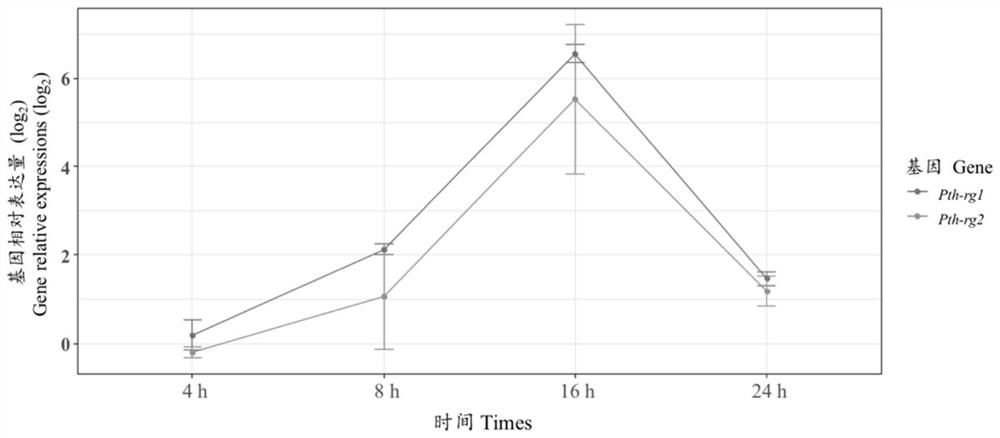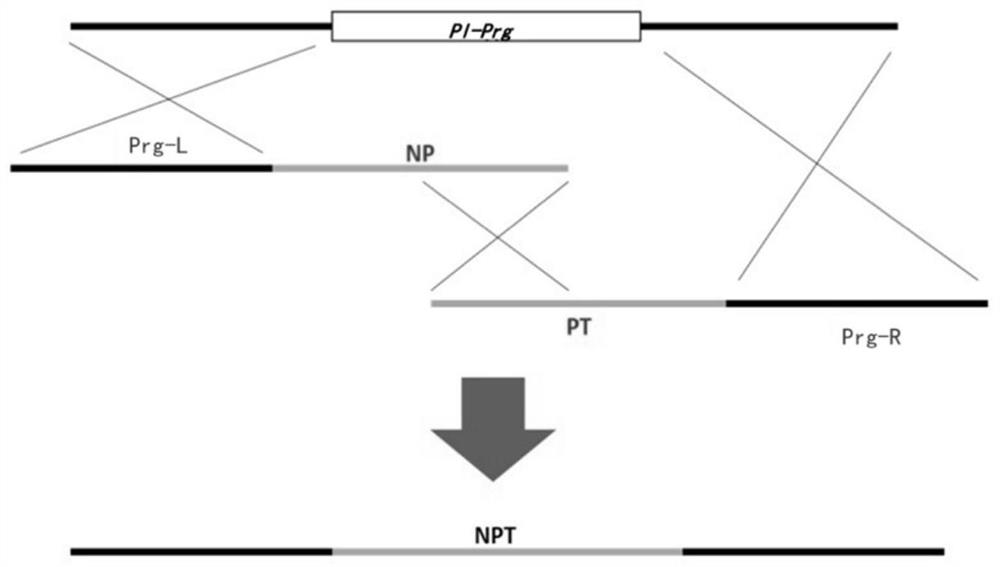Purpureocillium lilacinum Pth11 gene and functional verification method thereof
A kind of lilac violaceum, gene technology, applied in the field of lilac violaceum Pth11 gene and its function verification, can solve the problems of research, lack of gene level function elaboration and the like
- Summary
- Abstract
- Description
- Claims
- Application Information
AI Technical Summary
Problems solved by technology
Method used
Image
Examples
Embodiment 1
[0080] In this example, a gene Pth11-rg1, which is homologous to the transmembrane protein coding gene of rice blast, was screened from the transcriptome and genome sequencing data of P. lilacinus, and its cDNA sequence is shown in SEQ ID NO. 1, and its nucleic acid sequence As shown in SEQ ID NO.3.
[0081] The following steps were used to prepare a genetically engineered strain ΔPth11-rg1 knocking out part of Pth11-rg1 and to verify its gene function:
[0082] ①Collect conidia after routine culture of lilac spore, and adjust the concentration of spore solution to 1×10 5 CFU / mL. Inoculate 100 μL of the above spore liquid into 100 mL of TG medium, and shake at 28° C. and 150 rpm for 24-36 hours until tiny hyphal balls appear (the hyphae at this time are young hyphae). The mycelia were collected by filtration with 4 layers of sterile lens paper, rinsed with a small amount of 0.7M NaCl solution to remove excess medium, and transferred to a 50 mL sterilized Erlenmeyer flask.
...
Embodiment 2
[0108] In this example, a gene Pth11-rg2, which is homologous to the transmembrane protein encoding gene of rice blast, was screened from the transcriptome and genome sequencing data of P. lilacinus, and its cDNA sequence is shown in SEQ ID NO. 2, and its nucleic acid sequence As shown in SEQ ID NO.4.
[0109] The following steps were used to prepare a genetically engineered strain ΔPth11-rg2 knocking out part of Pth11-rg2 and to verify its gene function:
[0110] ③ Collect conidia after routine culture of lilac spore, and adjust the concentration of spore fluid to 1×10 5 CFU / mL. Inoculate 100 μL of the above spore liquid into 100 mL of TG medium, and shake at 28° C. and 150 rpm for 24-36 hours until tiny hyphal balls appear (the hyphae at this time are young hyphae). The mycelia were collected by filtration with 4 layers of sterile lens paper, rinsed with a small amount of 0.7M NaCl solution to remove excess medium, and transferred to a 50 mL sterilized Erlenmeyer flask.
...
PUM
 Login to View More
Login to View More Abstract
Description
Claims
Application Information
 Login to View More
Login to View More - R&D Engineer
- R&D Manager
- IP Professional
- Industry Leading Data Capabilities
- Powerful AI technology
- Patent DNA Extraction
Browse by: Latest US Patents, China's latest patents, Technical Efficacy Thesaurus, Application Domain, Technology Topic, Popular Technical Reports.
© 2024 PatSnap. All rights reserved.Legal|Privacy policy|Modern Slavery Act Transparency Statement|Sitemap|About US| Contact US: help@patsnap.com










